Despite the fact that the global economy is undergoing a sharper-than-expected slowdown amidst lingering fears of a recession, Uganda Revenue Authority (URA) reported that net revenue collections for the nine months of the FY 2022/23 reached UGX 17.53 trillion against a target of UGX 25.15 trillion. With three months left to go, this represents 69.72 per cent of the annual target. This is a substantial growth of 13.37 per cent or UGX 2.1 trillion compared to the same period in the FY 2021/22.
Including the shortfall, this last quarter, URA has to collect UGX7.62 trillion, accounting for the remaining 30.28 per cent of the annual target of UGX 25,15 trillion. There are all signs that URA is on a good course to achieve this target- given that of the UGX 2.04 trillion targets for April 2023, UGX 1.10 had been collected by the 14th of April 2023 representing 53.94 per cent of the month’s target.
“The projected economic recovery coupled with enhanced tax administrative initiatives will support URA to meet its annual target,” the tax authority observes in its Q3 FY2022/23 report.
URA’s optimistic projections are backed by a projected 5% growth on the back of renewed investor confidence, improved private sector activity, as well as continued government’s extensive infrastructure development program.
URA is also counting on a significant growth in the taxpayer base⏤ by the end of March 2023, the tax register had a total of 3,276,262 taxpayers, of which 658,254 were new taxpayers registered representing a growth of 25.14 per cent against a target of 12.75 per cent and posting a performance of 197.18 per cent.
URA has consistently registered a growth in revenue collections every financial year. For instance, in FY 2020/2021, despite a raging Covid-19 pandemic, URA registered a 14.99% growth in collections, the highest in East Africa. Tax collected, reached UGX19.26 trillion, the highest ever. Although the tax authority didn’t beat the projected UGX21.64 trillion, the FY2020/21 performance, at 89.02% was nearly 7 percentage points above the 82.34% performance (UGX16.75 trillion) registered in FY2019/20. In FY2021/22 URA again increased its performance to 96.85%, notching some UGX21.66 trillion against a target of UGX22.36 trillion.
Business unusual
All this growth amidst adversity didn’t just happen in autopilot mode. It rather has been through the hard work and sweat of the patriotic men and women at Uganda Revenue Authority, under the leadership of John Rujoki Musinguzi, the Commissioner General. It also builds on the foundation created by past leadership.
In April, John Rujoki Musinguzi started his 4th year as Commissioner General of Uganda Revenue Authority (URA), Uganda’s exchequer. He assumed office on April 1st 2020, coinciding with the onset of the Covid-19 pandemic, literally jumping in at the deep end.
He didn’t waste time.
In his very first address to staff, he impressed it upon staff, that it would be business unusual.
“My focus in URA will be to tackle corruption, tax education, enhance the human resource function, improve stakeholder relationships and leverage on technology and research to improve the integrity and revenue collections and growth of URA,” he told staff.
To deliver on this, Mr. Musinguzi led the tax authority through a ‘values and organisational culture’ realignment, process, deliberately choosing to focus on Patriotism, Integrity and Professionalism as the new values.
URA’s vision was also readjusted to being “a transformational revenue service for Uganda’s economic independence”. A new client value proposition “we promise simplified, timely, reliable and convenient revenue services everywhere at a minimum cost to you” was also put in place and staff rallied to live and deliver it to all stakeholders.
“There’s a new dispensation at Uganda Revenue Authority, where staff integrity and efficient service delivery are our number one priority. We are reviewing a number of organisational structures, our human management practices, to ensure that we carry out this noble task with the integrity and accountability that is expected of us,” he told the media at his very first quarterly performance press conference.
“Going forward integrity, patriotism and professionalism are the core values that define us as the URA team. We will have no tolerance at all for corruption,” he reiterated.
| FY2019/20 | FY2020/21 | FY2021/22 | FY2022/23 | |
| Target (UGX) | 20.34 trillion | 21.64 trillion | 22.36 trillion | 25.55 trillion (17.91 trillion) |
| Actual Collections (UGX) | 16.75 trillion | 19.26 trillion | 21.66 trillion | 17.48 trillion |
| Achievement (%) | 82.34% | 89.02% | 96.85% | 68.41% (97.6%) |
| Growth | .81% (0.1 trillion) | 14.99% (2.51 trillion) | 12.34% (2.4 trillion) | 14.83% |
| Variance | 3.59 trillion | 2.38 trillion | 0.74 trillion | 8.07 trillion (0.431 trillion) |
| Table 1: URA Revenue Performance (FY2019/20- FY2022/23) | ||||
Around the same time, Musinguzi led URA through a major shakeup in its senior management. A number of Commissioners resigned, while others were shuffled. URA also promoted some Assistant Commissioners and appointed new talent from the private sector to head such key functions as Domestic Taxes and Information Technology & Innovation departments.
Winning stakeholders’ hearts and minds with voluntary disclosure and Alternative Dispute Resolution
To deliver on the new mission of “mobilising revenue for national development transparently and efficiently”, the Musinguzi-led URA also implemented a number of carrot-and-stick strategies with a major focus on tackling corruption and integrity enhancement, leveraging technology to enhance compliance through initiatives like the Electronic Fiscal Invoicing and Receipting Solution (EFRIS), and the Digital Tracking Solution. He also emphasised that URA would prioritise stakeholder engagement, Alternative Dispute Resolution (ADR), tax education, and voluntary disclosure, with enforcement as the last resort. He also said the tax authority would also enhance and train its people to match up to the task.
For example, under the voluntary disclosure program introduced in 2020, taxpayers are encouraged to approach URA and willingly declare their business information and tax affairs to URA with a commitment to tax compliance thereafter. A certificate is given to the taxpayer. Some of the benefits of the program include avoidance of paying accumulated interest and penalties, providing a fresh start for the taxpayer, and opening room for dialogue with URA.
So far, 47 taxpayers have joined the new program and tax education continues to attract more taxpayers to the program as they understand how it works and benefits them.
“We want to see a change in the tax paying culture of Ugandans as well as improve the collecting efforts of the taxman with the activation of the voluntary disclosure program,’’ said John Musinguzi.
“We are urging all our taxpayers on their own without any prompting from the URA, to come forward and disclose their tax liabilities or any omissions in their tax declarations to be compliant with the tax obligations in accordance with the law. We encourage taxpayers to fill out the voluntary disclosure form, which is available on the URA portal and make payments of the principal tax only. The taxpayer who voluntarily discloses and pays the principal tax is entitled to a waiver of penalties, interest, and any other applicable fines. We call upon members of the public and our taxpayers to take advantage of this window and voluntarily declare their tax positions and avoid paying any penalties or interest on those obligations,” Musinguzi beckons.
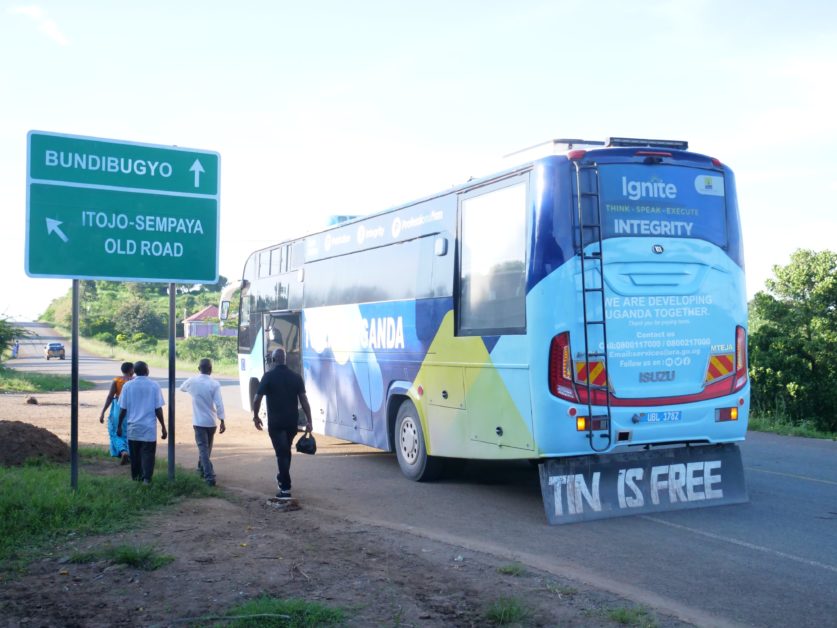
Again, in the spirit of taxpayer empathy, URA is also encouraging and actively pursuing, Alternative Dispute Resolution (ADR).
ADR is a voluntary, participatory and facilitated discussion over a tax dispute between a taxpayer and URA. This has been operationalised under Musinguzi’s leadership for the last two years where both the taxpayers and URA have come together to resolve their disputes outside the court system which is sometimes tedious and time-consuming. ADR seeks to enrich the entire dispute resolution process by providing flexibility and timely/early dispute management without the limitations imposed by judicial and quasi-judicial processes regarding technical procedures, untimely decisions and the rising costs of litigation.
In Musinguzi’s view, “ADR is a win-win solution. Both the taxpayer and the URA save their time, save their costs in handling these matters in the courts of law. And it is an approach that we promote and would like to encourage a number of our taxpayers who are ready to settle their tax issues, to approach us and we will be able to peacefully and amicably settle these tax disputes and save our time and costs that we normally incur when we spend so many years in court fighting to settle these matters”.
| No. of cases received by ADR oversight committee | Table 2: ADR statistics from July 2022 to March 2023 | No. of cases Referred to mediation by TAT | No. of cases concluded | Total Tax collectable after ADR/ Mediation |
| 624 | 235 | 170 | 80,535,359,113 (TAT-guided mediation) | 80,535,359,113 (TAT guided mediation) |
| 1,287,370,756 (cases concluded by the oversight committee) | ||||
| Table 2: ADR statistics July 2022 to March 2023 | ||||
Some of the benefits realised from the implementation of ADR include expedited resolution of tax disputes and decreased cost of tax dispute resolution associated with litigation. It has also enhanced cordial relationships between Uganda Revenue Authority and the taxpayer, improved service delivery to the taxpayer and tax advisors as well as addressed customer concerns and improved tax compliance and confidentiality.
Tackling corruption and leveraging technology to enhance compliance
One of the biggest challenges to revenue collection remains corruption, Musinguzi openly admits. But he is also equally open up about URA’s brazen efforts to tackle the vice that he says, other than causing revenue leakages, dents the organisation’s reputation on the outside as well as damages the organisational culture of integrity on the inside, all of which have a combined effect to damage the taxpaying culture.
To deal with the challenge of corruption, URA in 2021 adopted the Comprehensive Integrity Strategy (CIS) to fight corruption internally and improve service delivery and revenue collections. In addition, the URA Board incorporated robust policies such as the URA Code of Conduct, Lifestyle Audit Policy, Anti-Fraud and Corruption Policy, and Prevention of Harassment, Sexual Harassment, and Abuse of Office Policy; to fight corruption among staff.
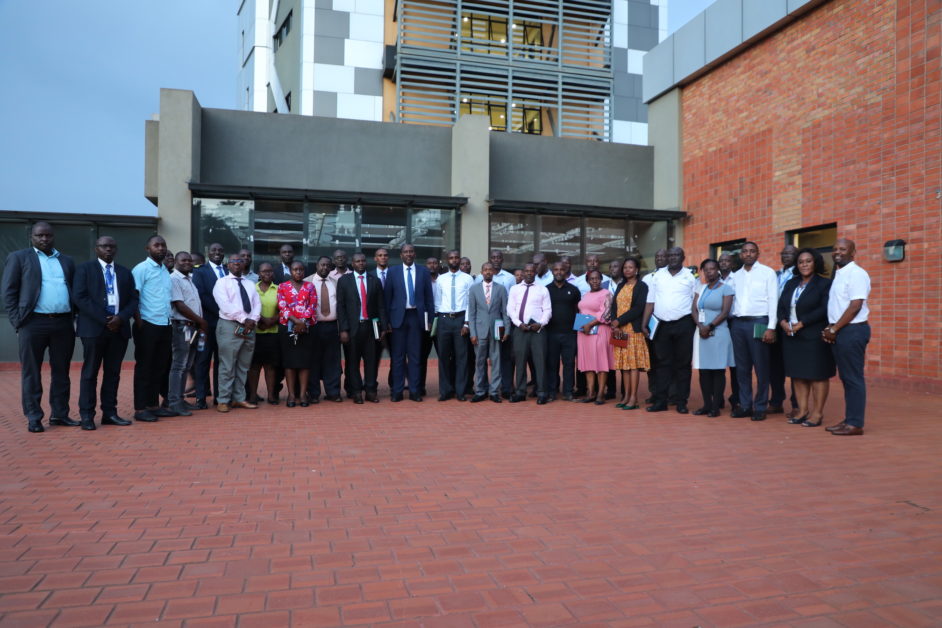
So far, 67 staff have been dismissed on grounds of corruption including 3 who have been prosecuted and convicted in the courts of law. Another considerable number of staff have answered queries on how they perform their duties once reported for wanting behaviour by either their colleagues, line managers or whistle-blowers. This has greatly reduced the many forms of corruption.
“This is something we do to keep ourselves in check in the course of conducting URA business,” Musinguzi iterates.
Alongside the fight against corruption, URA has capitalised on technology and science to enhance revenue administration and growth in collections aimed at surpassing the target. This is facilitated by several digital applications enhanced by URA such as the Non-Intrusive Inspection (NII) scanners, Bonded Warehouse Information Management System (BWIMS), Electronic Fiscalised Receipting and Invoicing Solution (EFRIS), Digital tracking systems (DTS) and the AskURA App, among others.
To improve the revenue collection efforts, the IT department developed the URA USSD code and TouchPoint – a Client Relationship Management (CRM) tool, to boost revenue and curb revenue leakages. In addition to the TouchPoint, a fully-fledged contact centre is operational and dedicated to professionally handling clients’ queries and complaints as URA strives to deliver a delightful client experience. This is in addition to a service charter that defines the service offerings to clients.
The over 40 Non-Intrusive inspection machines that were installed at major entry points such as Mpondwe on the Uganda – DRC border in Kasese District, Entebbe international airport and other border points, have helped combat smuggling and entry of prohibited goods into the Ugandan market. Intelligence has also intensified with the use of NII technology thus increasing revenue collections.
| Years | Cases | Dismissal | Termination | Prosecution |
| 2020 | 27 | 7 | 20 | |
| 2021 | 14 | 5 | 9 | |
| 2022 | 13 | 4 | 9 | |
| 2023 | 9 | 5 | 4 | 3 |
| Table 3: Corruption: MDC Statistics | ||||
The Bonded Warehouse Information Management System (BWIMS) was launched in November 2022 for better management and accountability of cargo under customs control. BWIMS enables the integration of bonded warehouses’ stock management systems with customs systems, ensuring seamless information exchange among different government agencies, freight forwarders, and consolidators.
URA launched the Air Cargo Control Unit (ACCU) in June 2022, at Entebbe Airport, to address the trafficking of various illicit goods such as drugs, wildlife, firearms and nuclear materials among other restricted and prohibited goods.
The new Digital Tracking Solution (DTS) has increased the collection of excise duty to 13 consumer goods while curbing revenue leakages and reducing the penetration of counterfeit products into the market. For the period July to December 2022, URA collected UGX 919.61 billion from local excise duty.
The unique labels contain security features that can be tracked and traced along the distribution chain. They are being applied to beers, soda, juice, wines, whiskeys, water, sugar, cement, tobacco cooking oil and cigarettes, among others.
In 2021, URA also introduced the instant Tax Identification Numbers (TIN) issuance for individual taxpayers. This increased the number of taxpayers on the taxpayer register to the current 3.5 million taxpayers from a meagre 2 million as a result of reduced turn-around time for TIN acquisition from 3 days to same-day delivery.
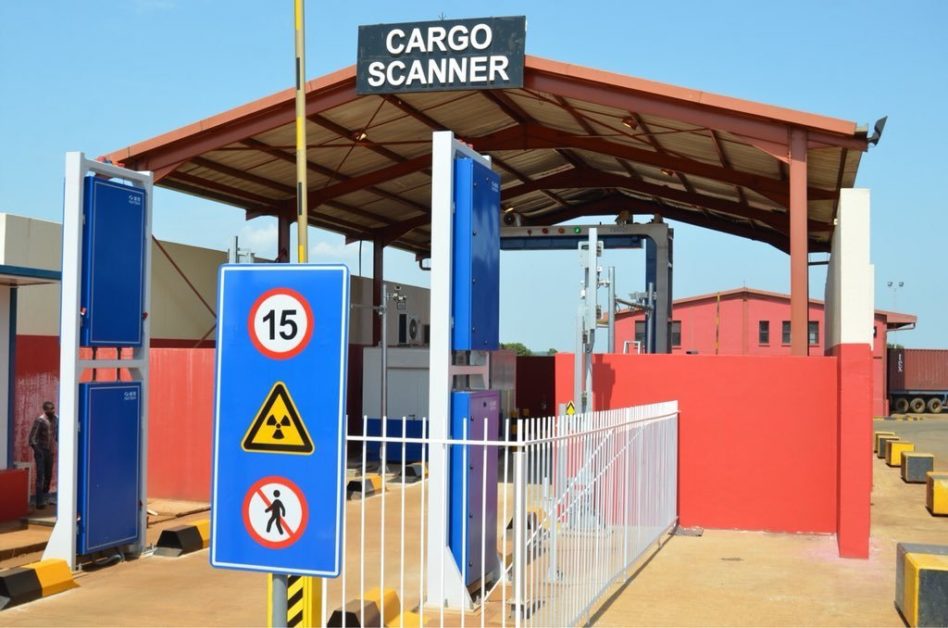
“We have introduced and we will continue to promote the use of technology to enhance the taxpayers’ experience and revenue administration,” Musinguzi says adding: “We will focus and deepen our data analytics. URA going forward will be guided by data, analytics, and intelligence to enhance our efficiency and guide our decision-making process.”
Stakeholder engagements tax education
Even with all the technology deployments, URA remains committed to delivering a delightful face-to-face interaction with its stakeholders and creating an enabling environment for doing business. Some of the key stakeholders engaged include various associations like the Uganda Manufacturers Association, the Gold Refiners and Exporters Association, the Bankers Association, the Uganda Hotel Owners Association, the Judiciary, KACITA, freight forwarders such as UCIFA, Motor Vehicle dealers, among others.
In 2021 and 2022, URA accredited 38 new operators for the Authorized Economic Operators program which enhances trade facilitation, promotes the security of international trade and promotes voluntary compliance with customs laws.
In this same period, URA has embarked on trade-facilitating moves such as the signing of the Mutual Recognition Agreement (MRA) with China, an MoU with South Africa’s Revenue Services body to ease the export and import of goods to South Africa by the AEOs, to mention but a few. The MRA promotes trade in goods and market access between Uganda and the partnering countries.
On the international scene, URA retained its council membership in African Tax Administration Forum (ATAF), a platform that promotes and facilitates mutual cooperation among African Tax Administrations, for purposes of increasing revenue mobilisation.
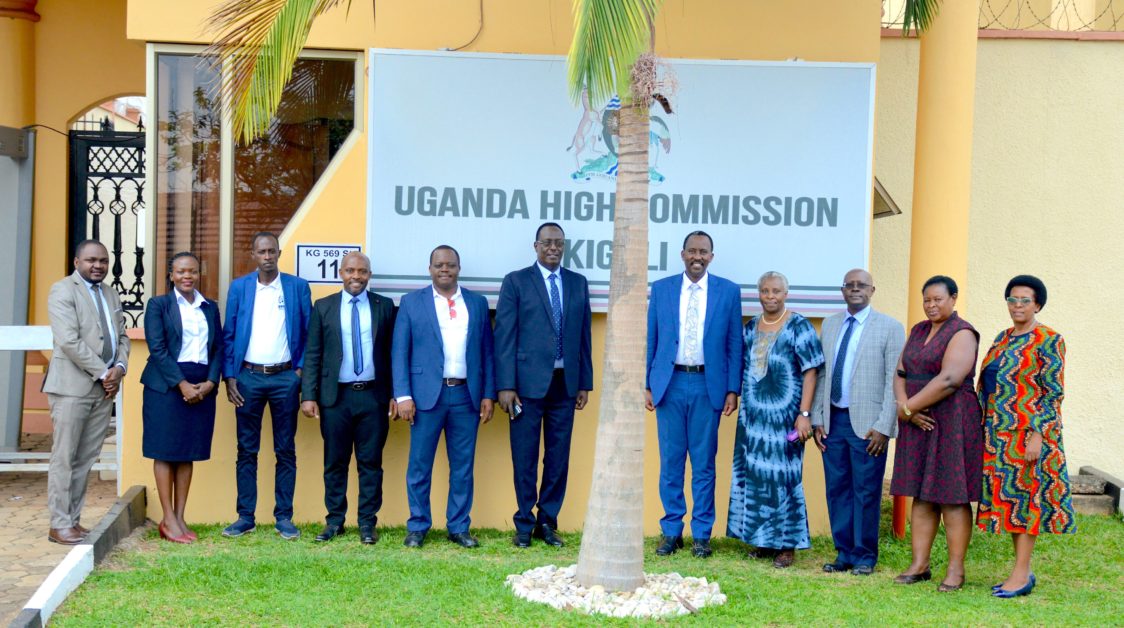
URA joined the Organisation for Economic Co-operation and Development (OECD) under the Exchange of Information program. This is a tax compliance tool that supports audits and investigations on cross-border transactions, especially for multinationals and high-net-worth individuals. This is a tool that URA has actively implemented with growth in the number of requests from two in 2012 to over 170 between 2014 to 2022 with tax recovery of UGX 259,935,498,396 in the same period.
In addition, URA has equally built synergies with various organisations both internally and externally to improve service delivery and also expand the tax register. Internally, these include ministries, departments and agencies such as UMEME, National Identification and Registration Authority, National Water, and Sewage Corporation, Uganda Registration Services Bureau, and Ripplenami. These have been instrumental in the improvement of rental tax collections which have been progressive from UGX 12.44 billion in December 2021 to UGX 17.06 billion in December 2022.
Externally, URA has had over 18 benchmarks from other countries and signed Memorandums of Understanding with revenue bodies like the His Majesty Revenue and Customs of the UK, South Africa Revenue Services, African Tax Administrations Forum, East African Regional Authorities, East Africa Revenue Authorities Commissioner Generals.
URA is also focusing on tax education to equip taxpayers with the relevant knowledge of their responsibilities, rights, obligations and the importance of business formalization.
Tax education is geared towards simplifying the understanding of tax for Ugandans from the grassroots level, largely comprised of the informal sector. Prioritisation of taxpayer education is hinged on the strategy to empower taxpayers with information on their rights and obligations so that they voluntarily comply with tax laws.
“A knowledgeable taxpayer understands the tax system better, how to file their returns and how tax compliance contributes to their well-being and that of their country. This overall enhances the taxpaying culture and national tax revenue,” Musinguzi emphasises.
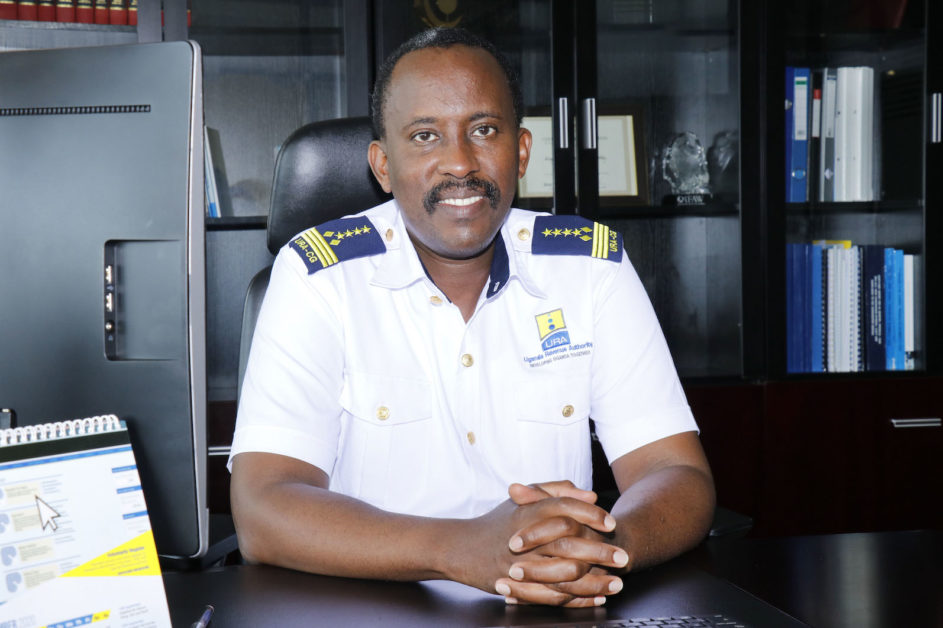
One of the tax education innovations is the Tujenge Uganda Buses, a mobile service office that was launched to bring services such as taxpayer education, register expansion and cleaning, targeted filing ratio analysis, tax advisory services and stakeholder engagements, closer to the hard-to-reach areas where URA has no office.
Other tools of Tax Education being used to engage taxpayers include tax katales, tax clinics, televised tax barazas, radio and television talk shows, door-to-door sensitisation, production of brochures, hard and soft copies of taxation handbooks, and webinars among others.
Enhancing the Human Resource Function
Under Musinguzi’s leadership, URA has also increased efforts and resources for staff training and sensitisation. Periodic refresher courses are availed for staff to understand their role and improve service delivery. This was strengthened by the creation of a fully-fledged learning and development division that spearheads staff training and development. They provide various international and locally accredited courses for staff capacity development.
In addition, URA strengthened its human resource base with over 650 employees who were deployed to different departments to fast-track revenue mobilisation efforts.
Musinguzi still has his eyes set on growing Uganda’s tax-to-GDP ratio from 13% to at least 18% by FY 2024/2025, as stipulated in Uganda’s Domestic Revenue Mobilisation Strategy (DRMS). He still believes that creating a more tax-aware citizen/taxpayer is the best tool for enhancing a voluntary taxpaying culture, complemented by a continued roll-out of technology and the use of data and analytics in revenue collection. He is also a keen believer in stakeholder engagements and staff skilling, as well as integrity enhancement as tools that will drive voluntary taxpayer compliance.
